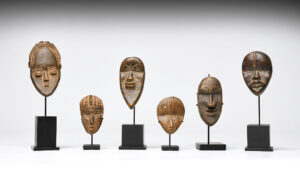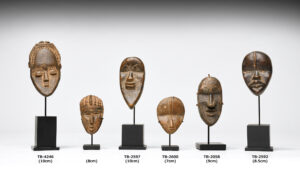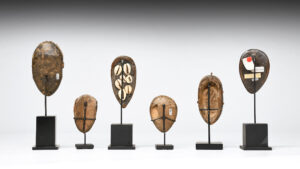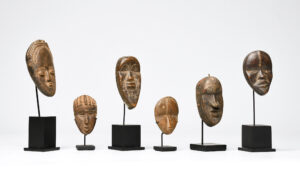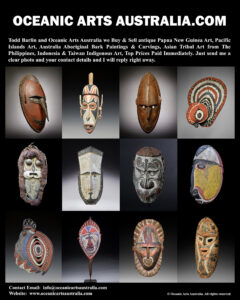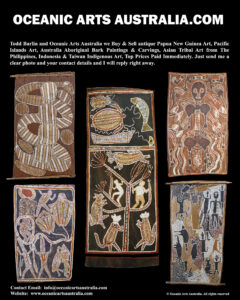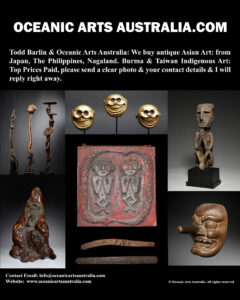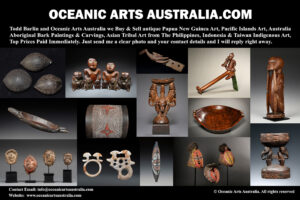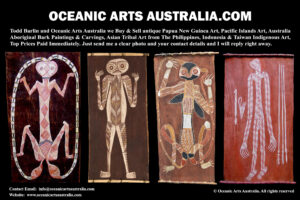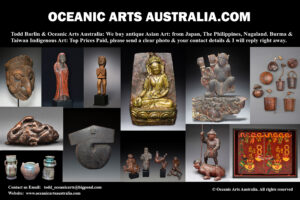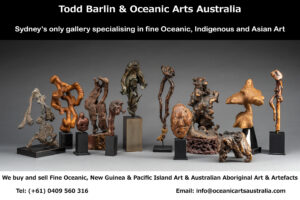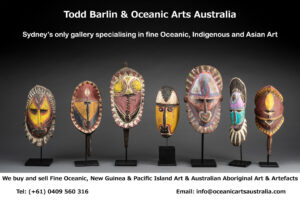A Fine Collection of Antique African Passport Masks Dan People Ivory Coast West Africa
| Collection No. | A Fine Collection of Antique African Passport Masks West Africa |
|---|---|
| Size | 4cm to 11cm |
A Fine Collection of Antique African Passport Masks Dan People Ivory Coast West Africa dating from the 19th to early 20th Century
Most Dan face masks genre, and those of the culturally related groups of Côte d’Ivoire and Liberia, are commonly executed in a miniature form, ranging in height between 6 and 20 centimetres.
Even the largest miniatures are too small to be worn in front of the face, and they rarely exhibit any means by which they may be attached to anything. The most common mask type represented in such a diminutive form is deangle (attractive mask with slit eyes, performs a feminine behaviour)
Miniature masks bear many names: the most common is ma go (small head), but depending on scholarship it has also be named gba po (thing which is fed), or nyonkula (substitute for the ancestors). Echoing the variety of names, they fulfill a variety of functions. Anyone who has a spiritual connection with a mask, or whose family owns an important mask, is entitled to commission a miniature. Rubbed with oil and food, they are wrapped up and kept on the owner’s body or among his possessions and function as portable and personal forms that share the power and protective force of the full-sized mask.
Miniature masks are carved to embody tutelary spirits and serve as testimony to the presence of the spirit associated with a large masquerade. When a mask-owner is travelling, the miniature mask serves as an important means of identification outside his immediate community. This role that may have given it the commonly applied name of “passport mask.”
Diviners can advise individuals to commission a miniature mask for preventative, protective, or curative purposes.
In addition to being the property of one single individual, in certain instances, miniature masks may also play a communal role in secret societies. They are among the sacred objects displayed at men’s society meetings to protect the men collectively and can be shown to new initiates. On these occasions, they are interpreted to be representations of the benevolent spirits associated with the most important masquerades of the area. They are used as sacred objects for taking oaths and for swearing to tell the truth.
Whether personal or collective, miniature masks must be fed regularly to remain strong and able to help their owner. Food may be simply set before it, or the offering, such as rice or oil, may be rubbed or poured onto it. On special occasions, a sacrificed chicken’s blood is spilled onto the mask. The range of offerings and use explain the variety observed in the miniature’s patinas.
Provenance: Many Old Collections from Europe & North America. The Todd Barlin Collection of African & Oceanic Art
Sources
Fischer, Eberhard and Himmelheber, Hans. The Arts of the Dan in West Africa. Zurich: Museum Rietberg, 1984
Grootaers, Jan-Lodewijk and Bortolot, Alexander, Eds. Visions from the Forests: The Art from Liberia and Sierra Leone. Exh. Cat. Minneapolis Institute of Arts. Seattle and London: The University of Washington Press, 2014
Johnson, Barbara C. Four Dan Sculptors: Continuity and Change. Exh. Cat. The Fine Arts Museums of San Francisco. M. H. de Young Memorial Museum. Chicago: University of Chicago Press, 1986
Vandenhoute, Pieter-Jan, 1938–1939 unpublished field notes, as cited by Claessens, Bruno in Refined Eye, Passionate Heart: African Art from the Leslie Sacks Collection. Amanda M. Maples Ed. Milano, Italy: Skira, [2013]
See my new EXHIBITIONS GALLERY showing the Museums and Art Galleries Exhibitions that I provided artworks for over the past 40 years. There is the link to the article about my artworks published in the prestigious Louvre Magazine in 1996
I have artwork for Museums and art Galleries but also for collectors at every stage of their collecting. I want to encourage people to explore the fine art of New Guinea & West Papua and the Pacific Islands and to be able to see and touch the artworks in a relaxed and friendly manner in my Sydney Gallery. I would like to invite you to visit my gallery and see the artworks in person and also look at my website www.oceanicartsaustralia.com where there are many Galleries & Sub Galleries to explore.
My Gallery of nearly 40 years is the last physical gallery in Sydney that specializes in New Guinea and Oceanic Art. Sydney is very close to New Guinea & the Pacific Islands where all of these amazing artworks came from, Australia’s closest neighbors.
To see many more rare items and the finest masterpieces, please make an appointment with us to visit the gallery.
For all inquiries, please contact us

